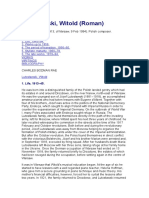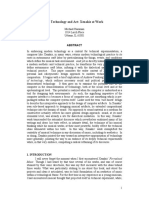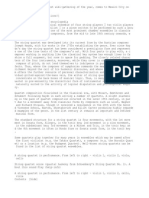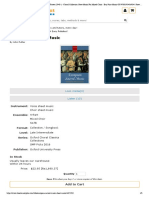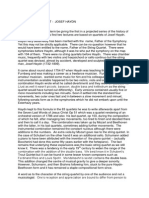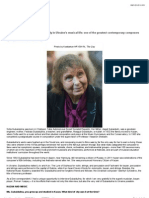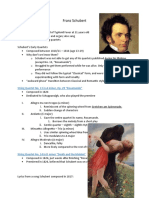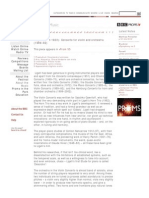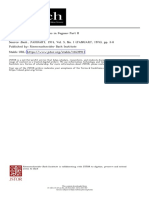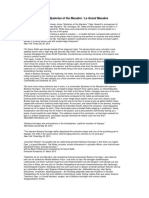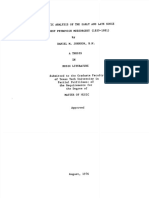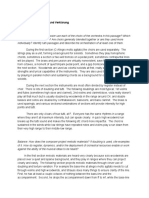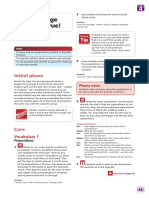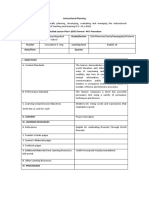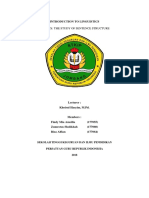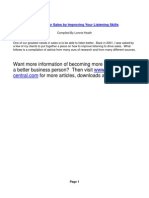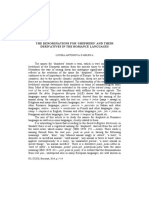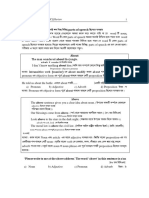
iBet uBet web content aggregator. Adding the entire web to your favor.
Link to original content: https://www.scribd.com/document/236911009/Analisis-Britten-pdf

Análisis - Britten PDF
Análisis - Britten PDF
Análisis - Britten PDF
Philip Rupprecht
vunii suvu ns 1uv vvvss ssxui c.1v ov 1uv uxi vvvsi 1s ov c.xnvi ucv
The Pitt Building, Trumpington Street, Cambridge, United Kingdom
c.xnvi ucv uxi vvvsi 1s vvvss
The Edinburgh Building, Cambridge CB2 2RU, UK
40 West 20th Street, New York, NY 10011-4211, USA
477 Williamstown Road, Port Melbourne, VIC 3207, Australia
Ruiz de Alarcn 13, 28014 Madrid, Spain
Dock House, The Waterfront, Cape Town 8001, South Africa
http://www.cambridge.org
Philip Rupprecht 2001
This book is in copyright. Subject to statutory exception
and to the provisions of relevant collective licensing agreements,
no reproduction of any part may take place without
the written permission of Cambridge University Press.
First published 2001
Printed in the United Kingdom at the University Press, Cambridge
Typeface Adobe Minion 10.5/13.5pt System QuarkXPress [sv]
A catalogue record for this book is available fromthe British Library
Library of Congress Cataloguing in Publication data
Rupprecht, Philip Ernst.
Brittens musical language / Philip Rupprecht.
p. cm. (Music in the 20th century)
Includes bibliographical references (p. ) and index.
ISBN 0 521 63154 8
1. Britten, Benjamin, 19131976 Criticism and interpretation. I. Music in the
twentieth century.
ML410.B853 R8 2001
780.92dc21 2001035577
I SBN 0 521 63154 8 hardback
Contents
Acknowledgments page ix
1 Introduction: Brittens musical language 1
Utterance as speech event in Our Hunting Fathers 6
Beyond the voice: the song quotations in Lachrymae 14
The social utterance: divine speech and ritual in Noyes Fludde 21
2 Peter Grimes: the force of operatic utterance 32
Naming Grimes: speech as action in the Prologue 36
The Borough is afraid: choric utterance in Act 1 42
God have mercy upon me: Peters self-sentencing 48
The chorus and hate speech 52
Melancholy and incipient madness: Peters last scene 62
3 Motive and narrative in Billy Budd 75
Motive as mystery in the Prologue 76
Claggarts Act 1 presence 90
Motive and narrative in Act 2 96
Operatic point of view: from Claggarts accusation to Billys trial 106
4 The Turn of the Screw: innocent performance 138
The sound of the turn 141
Innocent ceremony: childrens songs and the performance of
interiority 155
Ghostly machines: the drama of themes 170
The corrupt imagination: on seeing and hearing ghosts 179
5 Rituals: the War Requiemand CurlewRiver 187
Liturgy and trope in the War Requiem 191
Liturgy as ritual: theoretic perspectives 197
Utterance and stylistic register in the Dies irae 203
Tropes and irony: the Oertorium 209
Ritual disintegration 215
CurlewRiver as ritual 219
Ritual gesture 222
Estrangement and presence 227
A sign of Gods grace: acoustic mystery and the power of prayer 237
6 Subjectivity and perception in Death in Venice 245
My mind beats on: the conscious self in Scene 1 247
The travellers mind: inner and outer experience on the water 252
The charming Tadzio: Aschenbachs sonic gaze 267
One moment of reality: the love vow as focal utterance 274
Bliss of madness: the shattered operatic self in Act 2 282
I go now: parting utterance 289
Notes 297
Bibliography 337
Index 352
viii Contents
1 Introduction: Brittens musical language
Music, like speech, begins in the moment of utterance. As the cardinal act
of performance, utterance is an externalizing of musical ideas in the physi-
cality of vocal or bodily gesture. Utterance is a process of putting forth,
emitting an unbroken ow of sound emanating from a distinct source.
Something is revealed, made manifest; utterance, to recall the words
origins, is a bringing out.
1
For the listener, utterance names an experi-
ence of being addressed directly by the performer or (less directly) the
composer. By a process both interpersonal and reciprocal, performer and
listener make contact. A musical thought moves from in here to out
there, so establishing a chain of communication. Both music and speech
impinge on the world in the living present of the utterance, whether as
independent systems of address, or as paired discourses, acting together in
the medium of song. And it is this composite musical utterance a bring-
ing forth of words and music meaningfully and vividly, as one that is so
clear in all of Benjamin Brittens work.
The phrase musical language in my title engages the moment of utter-
ance in two distinct ways. In a rst, metaphorical sense, Brittens music is
itself a kind of wordless language a characteristic way of presenting and
shaping the interplay of essentially musical ideas (themes, rhythms, motives,
or keys) within an unfolding discourse. The sounds of music, on this
reading, themselves have properties usually ascribed to speech expression,
eloquence, a rhetorical force. Useful though the familiar metaphor of music
as language may be, Brittens music acts as a musical language in a second,
more literal sense. In opera and song, music and words encounter one
another directly. The fusion of these two media in lyric and dramatic genres,
or in sung liturgical ritual, is succinctly expressed in English as a setting of
words to music, and yet the process is by no means a simple one (behind that
to lies mystery). This musical language is anything but metaphorical, for
its powers of communication depend on the material presence of words. At
the same time, these words are tied, in their musical setting, to a precisely
coordinated role in a composite utterance. My aim throughout this book
will be to make the familiar interplay of music and words strange again and
to reect on the intricacies of their fusion in the single moment of utterance.
That the distinctive element in Brittens music is bound up with some
quality of utterance (rather than specic details of technique) was a point 1
quickly sensed by the composers early listeners. Henry Boys, writing in
1938, singles out Brittens gift for sincere lyrical expression of simple
moods, a perception echoed by the composers stated preference for
clear and clean orchestral textures, and perfect clarity of expression.
Erwin Stein, in 1953, remarks simply that Brittens way of expression is
direct.
2
The musics spontaneity of utterance, Stein feels, is a matter of
text setting, in particular the balanced and supple shift between natural
speech rhythms and a lyric stylization called for by details of poetic
imagery. In the Ben Jonson Hymn of the Serenade (Ex. 1.1), as Stein
notes, the voice announces the words with such lucidity, and the color-
atura on the rst syllable of ex-cellently is so bright, that the poem
appears to enhance the music as much as the music the poem (1953b:
156). Here is the sensibility, quick as a shs n, to a poetic image that
Edward Sackville-West praises in the Serenade, and a clear example of
Brittens tendency to place the burden of musical expression in the vocal
line itself, not in the accompaniment.
3
In the early reception of Brittens works, utterance in the texted music is
understood largely in terms of what Stein calls musical diction.
Questions of prosody and the natural speech rhythms of words topics
on which Brittens music was both praised and damned remain central
for his early critics, as too does his response, through word painting, to the
semantic plane of language.
4
But such perspectives, however much they
hint at a distinctive tone of musical speech with or without actual
words fall short as a general model of musical utterance. If analyses of
Brittens lyric songs tend to dwell, in a recognizably New-Critical vein, on
diction and imagery, words on the operatic stage demand a dierent
response. Texted dramatic utterances are actions words and music
forged, in the heat of a dramatic situation, into single, multimedia
events. Hobsons Peter Grimes! call (Ex. 1.2) to cite only the rst two
sung words of the opera Peter Grimes is mechanical in rhythm and
monotone in pitch, yet these features are not based in imagery or prosody
but in social relations. This Peter Grimes! call is an order, an utterance
addressed to Peter with a specically juridical force in the courtroom, as he
is called to give evidence. To recognize that all utterance is, to an extent,
2 Brittens musical language
Ex. 1.1: Vocal utterance in a lyric setting: Goddess, excellently bright, Serenade
social and interpersonal in nature, is to understand language as political.
Utterance engages not only the linguistic ability to describe or signify
(though the name Peter Grimes! does of course refer), but also linguistic
powers of coercion. To say something, as J. L. Austin suggests, is to do
something(12; Austins emphasis). Language, at the moment of utterance
itself, is acting as much as signifying.
Returning the emphasis, as I will do throughout this book, to language
as act or performance will help dene a new set of questions for the role of
words in music. The discussion raises issues that go beyond the specic
case of Britten. If everyday speech can be doingas well as saying, does the
same hold for words in a musical context? Do acts of song a category that
might include all sung vocal utterance, whether lyric or dramatic draw
on the coercive powers of conventional (i.e. non-musical) acts of speech?
Does the social and institutional force of, say, a promise or a prayer func-
tion in musical promises or prayers, and if so, is this specically linguistic
agency acting independently, or is it supplemented, inected, or projected
by musical features of the utterance (melody, harmony, texture, and so
on)? If the drama of opera may be said to spring precisely from an inten-
sied enactment of everyday experience, in a more or less heightened vocal
utterance, one might well appeal beyond traditional opera-critical con-
cerns motives, music as a response to character, genre to consider
operatic drama primarily in terms of individual utterances in specic
social situations. Operatic speech, for all its patent artice, obeys laws
familiar from the social world beyond the stage.
Chapter-length readings of four of Brittens operas are central to this
book, and my interpretations of musical drama engage various develop-
ments in recent opera criticism, not least a renewed concern with codes of
narrative and performance, and with representations of the ideological
and psychological subject.
5
Little work has appeared, though, towards
what might be called a performative understanding of operatic speech
Introduction 3
Ex. 1.2: Vocal utterance as dramatic act: hailing the protagonist in Peter Grimes
one that incorporates, say, the insights of linguistic philosophers into
spoken utterances.
6
More frequently, utterance in vocal music is still
treated largely in terms of textual expression, locating an originary
meaning that is primarily verbal, while downplaying the possibility that
music might, as Nicholas Cook puts it, participate in the construction of
that meaning (1998: 115). Even where musics powers to complement or
contest a verbal meaning are acknowledged, Cook adds, discussion is con-
ceptually loose.
7
But there are good reasons, as I will claim, to resist the
familiar critical trope that pits words against music as separate media, and
it is via the fused and composite notion of the utterance rather than by an
oppositional view of separate strands of the complex single event that I
approach the coexistence of text and music in Brittens case.
The view that linguistic utterance is actional as well as symbolic is
common to a range of mid-twentieth-century theoretical positions, from
anthropological accounts of ritual performance in tribal societies to J. L.
Austins philosophically tinged theory of the speech-act as the founda-
tional unit of verbal exchange and Bakhtins concept of speech genres
forms of discourse peculiar to a given sphere of human activity.
8
The pola-
rity is clear in Saussures classic distinction between the system of lan-
guage and the event of speech as an individual act of the will and the
intelligence (14). In Saussures analysis, however, linguistic meaning is
sought primarily on the semiotic level of the sign,
9
and Bakhtin, for one,
attacks earlier linguists for weaken[ing] the link between language and
life by excluding languages addressivity (the quality of turning to
someone), and concentrating only on syntax and semantics.
10
The
actional, operational view of language, on the other hand, is rooted in the
contingency of situation, the primacy of exchange in verbal encounters,
and the speakers ability to accomplish things with utterance.
The rst recorded concepts of music encompass a fusion of words and
pitches, yet later music history has emphasized only an interplay of
master and servant arts.
11
The tradition is apparent, for instance, in
Christoph Bernhards mid-seventeenth-century distinction between a
stylus theatralis in which language is the absolute master of music and a
stylus gravis in which the reverse applies (110). Such hierarchical opposi-
tions are called into question by Bernhard himself, in the idea of a style in
which language and music are both masters the grandly named stylus
luxurians communis and yet Bernhard can be frustratingly brief on the
central question of how this sharing of powers might be accomplished:
one should represent speech in the most natural way possible . . . render
joyful things joyful, sorrowful things sorrowful, swift things swift, slow
things slow(111). The idea here that musical utterance eects one-to-one
4 Brittens musical language
representation of some univocal linguistic object (joyful things) seems
quaintly mechanical as an account of musical speech, limited as it is to
essentially grammatical concepts of subject and predicate.
12
Bernhard
comes closer to detailing the moment of utterance itself with the mention
of musical settings of questions,which according to common usage, are
ended a step higher than the penultimate syllable:
Musical repetition occurs when two successive utterances are similar in
subject matter. Musical repetition a step higher occurs in connection with
two or more successive questions, when their words correspond in subject
matter [Gleichheit der Worte an der Materie], and when the last seems to be
more forceful than the rst. (111)
The passage exceeds the grammatical notion of subject matter to con-
sider a discursive category of social exchange (the question), and even a
specic context in which the question is reiterated, in conjunction with the
musical technique of sequence, to convey the singers more forceful atti-
tude to what is being sung. Later writers, through the doctrine of Aekt,
increasingly emphasize musics powers to express not only gurative detail
but also the speakers inner state, a matter of emotion and feeling, of which
words are only the outer manifestation.
13
That Britten himself showed more than a passing interest in Baroque
models of text setting notably in the Purcell realizations beginning in the
1940s need not imply that his concept of musical utterance was bound by
the overworked metaphor of music and words as master or servant
arts. One sign of the composers sense of the utterance as a fused event is
the prominence, in the texted music, of moments that underline cardinal
dramatic points in a single stroke. These gestures of epiphany one thinks
not only of Grimess God have mercy!cry, but equally of Aschenbachs I
love you and the Spirits blessing in Curlew River make their eect in
ways that are both musically and verbally new in a given context. The
most telling moments in Brittens work are just that moments, single
utterances whose uncanny reverberating force springs from a careful
staging in relation to larger dramatic unfoldings, as well as on the dis-
tinctive prole of local gesture. Examining these moments, throughout
this study, I elaborate a view of Brittens musical language as something all
of a piece, a single mode of verbal-musical utterance. This foundational
intuition is eloquently summed up in a comment of Myfanwy Pipers, on
her experience of collaborating with Britten on opera libretti:
Every word is set to be heard for its part in the unfolding of the story and for
its quality as part of the human instrument. Speech articulated in sorrow or
joy, in pain or ordinary conversational exchange is as much part of the music
Introduction 5
of the voice as the note itself: the word and the note is one thing, not two.
(Piper 1989: 8)
Utterance, in all Brittens texted vocal music, is this one thing, a point to
be elaborated from a number of angles in the ensuing chapters.
In order to explore further the conceptual eld I am considering here
under the heading of utterance, the remainder of this opening chapter
oers three case studies of works in contrasting genres from dierent
phases of Brittens career. Turning rst to Brittens 1936 symphonic
cycle, Our Hunting Fathers, I consider the identity of utterance and its
functioning in the speech situation. A second study explores the possibil-
ities of utterance in a purely instrumental work, Lachrymae for viola and
piano (1950), whose unfolding is rich in discursive shifts suggestive of the
change of speaker implicit in acts of quotation. To close, I turn to Noyes
Fludde (195758), a staged dramatic spectacle in which the inherently
social and interpersonal character of musical utterance is especially vivid.
1. Utterance as speech event in Our Hunting Fathers
The term utterance refers, in common parlance, to an unfolding process
of vocal enunciation (the verb, to utter) and to the discrete units of
vocally realized thought or expression (utterances) that result. For lin-
guists, the utterance is a minimal unit of speech (any stretch of talk, by
one person, before and after which there is silence on the part of the
person),
14
a usage whose applicability to a musical event such as the
soloists entrance in Rats away!, the second song of Our Hunting Fathers
(Ex. 1.3), seems uncontroversial. As in speech, the silences around the
edges of a musical utterance are a matter of tolerance, and boundaries here
are simply those of the onset and cessation of vocal sounds (excluding, for
the present, orchestral contributions to the texture). Identifying the utter-
ance as one stretch of singing says nothing about its formal structure.
Musical utterances may or may not correspond to recognized musical
phrase types (just as spoken utterances do not necessarily form grammati-
cal sentences, clauses, or single words). The vocal utterance of Example 1.3
expires without conventional melodic closure, curtailed by an instrumen-
tal interruption, and its text (one word: rats!) is grammatically inconclu-
sive. Even so, one hears an utterance, for this is a continuous speech event
of dened extent.
To call the vocal utterances in Rats away! speech events is to under-
stand them rst and foremost as actions performed with language. The
fusion of words and music in the song, I will suggest, makes its points less
6 Brittens musical language
by projecting the semantic content of individual words, than through a
bold interplay of distinct speech events vividly contrasted utterances that
constitute specic actions on the part of the singer. Highlighting a proxim-
ity of extreme contrasts in the character of each utterance, moreover, the
song builds up a strong tone of parody setting a mood that Peter Pears
aptly dubbed spiky, exact and not at all cosy (63). The opening setting of
rats! is a case in point, far surpassing in sheer exuberance any spoken
intonation of the word one might imagine. In Brittens score, the word
becomes a quivering series of breathless gasps, a stream of vowel sound
that eaces its characteristic phonetic articulations. As a way of introduc-
ing the solo voice into the orchestral texture, this near-vocalise is a daring
ploy on Brittens part (one that lies outside the main text as Auden has
devised it). The rats! exclamation is a shriek, albeit a highly stylized one,
comprising numerous rapid scalar runs that build to a penetrating high-
register nish.
Introduction 7
Ex. 1.3: The rst vocal utterance in Rats away!
[ instrumental interruption ]
In the body of the song, the singer settles down to more conventional
forms of syllabic text setting (Ex. 1.4), each quite distinctive in texture: a
rapid, monotone chant (I command all the rats) leads to more tuneful
melodic contours (the holy man), then the voice drops, nally, to a kind
of stage whisper (Dominus, Deus), at the lower end of the soprano
range.
15
The chant, backed by the hurdy-gurdy sound of open strings (in
solo viola), is a litany of holy and saintly names recited with a very distinct
purpose. The song, a listener soon realizes, is a prayer of exorcism: God
grant in grace / That no rats dwell in this place. The chant is as mechani-
cal, in its repeating melodic revolutions, as the opening cry was wild, and it
is the sharpness of this contrast at the level of utterance within the song
that generates its bizarre climax. At this moment, the pious chant and the
near-hysteric shriek come together within the soloists vocal part (Ex. 1.5).
As the prayer shifts from English to Latin words for its formal Doxology
(Et in nomine . . .), the singer reverts to chant, now against an orchestral
backdrop more animated than before. But at the same time, as Brittens
own 1936 program note puts it, we hear rats creeping into the soloists
part,
16
scampering between phrases and words even at one point
nding their way inside words (et Sanc (Rats!) ti Spiriti). The voice
part fragments, its attempts at formal delivery of the prayer undercut by
the high-pitched rats! shrieks.
Has the exorcism failed, or are these rats! cries a sign of rodents
leaving in droves?
17
One is not exactly sure, yet Brittens attitude to setting
the text enacts the drama of the situation. The scene comes vividly to life in
an experimental overlay of sharply distinct registers of utterance a
prayer, a cry of fright to comic eect. The technique bears a resemblance,
as an act of montage, to the inter-cutting of text and utterance types
Britten was employing in his contemporary work on documentary sound
lm.
18
In its parodic caricature of ecclesiastic chant, moreover, the song
looks ahead to the play with sacred and secular musical genres that
informs several later operatic scores.
19
Capturing the songs vein of parody
almost requires that one make utterance a central term of the analysis;
foregrounding utterance, one attends closely to questions of enunciation
and delivery an exaggeration of some recognizable way of speaking
while downplaying the more familiar perspective on texted song that seeks
only musical translations of meanings grounded in gurative verbal
imagery. An utterance-based analysis need not ignore details of illustrative
expression, but it will direct attention to dimensions of the musico-
verbal performance that lead beyond the local sphere of a words semantic
reference, and out into its function within the social world. Rats Away!,
as musical utterance, works above all by caricature, and in a recognizably
8 Brittens musical language
Introduction 9
Ex. 1.4: Three utterance types in Rats away!: (a) chant; (b) tunes; (c) stage
whisper
etc.
etc.
(a)
(b)
(c)
(a)
(c)
(b)
Audenish touch by subverting the expected solemnity of a familiar
speech genre, the act of prayer.
Our Hunting Fathers places a vocal soloist within the environment of a
full orchestra, so prompting questions on the relation of vocal utterance to
a surrounding instrumental texture. If utterance connotes a psychological
presence a sounding of intent, rather than merely a noise then vocal
utterances are not simply happenings, but actions.
20
The vocal soloist in
Rats away!, I noted, casts out evil spirits with her ceremonial speech, but
can the same be said for the songs orchestral component? Everything the
vocalist sings is an utterance of some denable type (cry, chant, whisper),
but do the instruments too have a voice? Glancing back to the interplay
of voice and orchestra in Example 1.3, one might regard the orchestra as a
kind of second, wordless speaker, capable of interrupting the singer.
Brittens 1936 program note mentions an emphatic protest from the
wood-wind here,
21
and this protest interrupts with a theme heard pre-
viously (also in the orchestra) at the climax of the rst song of the cycle.
The orchestra, like the singer, would appear capable of a form of speech
governed by more than the local exigencies of a verbal text.
To suggest that wordless instrumental gestures, like texted vocal music,
are a form of utterance might seem too broad a claim. But explicitly appro-
priating a general linguistic category in this way foregrounds the role of
verbal language in Brittens music at levels beyond that of conventional text
10 Brittens musical language
Ex. 1.5: Montage of chant and Rats! shrieks
shriek
chant
setting. The language in Brittens music, as I will argue throughout this
book, resides not simply in the fusion of words and music in texted vocal
utterance, but also in a rhetoric of exchange between vocal and instrumental
utterances, over the entire span of a work. An interplay of texted and mute
utterance is familiar in the Wagnerian concept of orchestral leitmotive as a
melodic or harmonic reference with a precise semantic dimension, and in
related concepts of orchestral narration as a supplement to the scenic
events on the operatic stage (to cite topics addressed in depth in Chapters 2
and 3 below). Returning to Our Hunting Fathers, this interplay between
voice and instruments is particularly vivid in the second song, Messalina,
which closes with passionate cries of lamentation, rst in the voice itself,
and then in an extended sequence of instrumental gestures (Ex. 1.6).
The words here Fie, e are weak in semantic potential; like the
extraordinary rats! cry of the rst song, their meaning depends on their
place in a larger scene:
Ay me, alas, heigh ho, heigh ho!
Thus doth Messalina go
Up and down the house a-crying,
For her monkey lies a-dying.
Death, thou art too cruel
To bereave her of her jewel;
Or to make a seizure
Of her only treasure.
If her monkey die
She will sit and cry:
Fie, e, e, e e!
The poetic speaker begins by reporting Messalinas grief-stricken wander-
ings, but ends more passionately. The opening line (Ay me, alas, heigh
ho!) retains the sense of sympathetic comment on Messalinas plight, but
at the poems climax, the singer slips into direct discourse, speaking as
Messalina.
22
In Brittens setting, the force of this utterance goes beyond the
detail of its stylized sobbing third-gures. As with the earlier rats! cry,
the moment stands projected by the thematic return of the motto-theme
familiar earlier in the cycle, shared now between both voice and orchestra
(in Ex. 1.3, the motto protest is solely orchestral). From this climactic
transcendence of actual voice, the song recedes into an orchestral epilogue.
Lamenting woodwind solos ute, oboe, clarinet, nally the saxophone
imitate the voice, drawing out the sobbing into a somber death march.
Utterance, in this Mahlerian Nachtmusik, passes from human sobbing
to the wordless speech of the animal world (most notably in the utes
bird-like calls).
23
Introduction 11
12 Brittens musical language
Ex. 1.6: Messalina, vocal and instrumental lamenting
etc.
Both voice and instruments seem to carry Messalinas lament, but the
utterance encompasses a transformational rhetoric, as sung words give
way to mutepitched articulations. The haunting epilogue of Messalina
looks ahead to Brittens large-scale operatic dramaturgy, not least to those
points where a decisive vocal utterance provides the basis for later, word-
less instrumental developments (one thinks, for example, of Claggarts I
accuse you, in Billy Budd). The distinction between actual sung words
and the wordless speech of instrumental utterance, at such points, is less a
shift in the identity of what is communicated (the message, as it were),
than a change in the way performer and hearer maintain contact. Voices
and instruments may utter versions of one musical message, but they do so
through dierent channels. To restrict the songs utterance only to those
passages that set actual words is to polarize articially the distance
between words and music as Britten construes it. Messalinas laments,
instead, suggest that musical utterance is actually a category broader than
traditional concepts of text setting or musical diction.
With the idea of contact as basic to any speech, and recalling the per-
ception noted earlier in the case of both rats! and e, e cries that
verbal language need not always assert an explicitly semantic reference
discussion returns to the basic insight that language works as much by
action as by signication. Nor is spoken utterance the simple stretch of
talk limited conceptually by the basic need for contact between speakers
or the possibility of verbal reference to some non-verbal context. As
Roman Jakobson argued in a classic 1958 formulation, the speech event
engages a multi-faceted system of interlocking factors:
24
CONTEXT
MESSAGE ADDRESSER
C O N T A C T
ADDRESSEE
CODE
The speech event balances relations among an addresser, an addressee, and
a message; for communication requires physical contact linking addresser
and addressee, and a shared code (English, for example). The act of speech
will invariably engage an outside context for a message. Jakobsons inuen-
tial scheme is a revisionary response to those earlier linguists who would
restrict analysis of verbal language to a purely referential function the
position exemplied in Sapirs claim that ideation reigns supreme in lan-
guage while volition and emotion come in as distinctly secondary
factors (38).
Considering musical utterance as a Jakobsonian speech event, it is pos-
sible to go beyond arguments (familiar in Wagners Opera and Drama)
Introduction 13
that pit the referential precision of verbal language against musics lack of
semantic potential. Analyzing Brittens music as a form of utterance, I aim
not to overturn the argument outright by denying the role of verbal sig-
nication, or by ignoring musics potential for emotional signicance
but instead to reframe the discussion in terms that do not isolate questions
of semantic reference from the other factors that make up the speech
event. The extraordinary prominence, in Our Hunting Fathers, of words
that seem, at rst blush, devoid of reference an interest continued in the
violent whurret! roulades of the third song, Dance of Death
25
is a
reminder that the meaning of speech is always more than mere reference to
the non-verbal world, and that musical utterance, like its spoken
counterpart, resists the separation of a verbally based meaning from the
conditions of its sounding passage.
2. Beyond the voice: the song quotations in Lachrymae
Musical utterance, in Our Hunting Fathers, is neither exclusively vocal nor
instrumental, but poised instead on a range of interactions between voice
and orchestra. Each speech event echoes and supplements the others, so
that the piece as a whole amounts to a composite utterance, made up of
many single enunciations themes and gestures shared among solo and
ensemble, verbal and mute (i.e. wordless) performers. In this kind of
unfolding discourse, palpable shifts of speaking presence are easily heard.
The cyclic returns, in Our Hunting Fathers, of the protest motto generate
one such shift, a chain of instrumental themes binding the songs together,
adding expressive depth at strategic moments in the texted song. In a com-
parable way, the leitmotives that thread their way through Brittens operas
articulate a musical discourse operating in the gaps between actual
singing. The very familiarity, within post-Wagnerian opera, of leitmotives
as an articulate though non-verbal presence almost allows one to forget
just how often plot events come to music by a move beyond the voice itself
as the main channel of utterance (as, for instance, with the mysterious
Grimes passacaglia, and the returning interview chords late in Billy
Budd).
26
Understanding the continuity of wordless thematic utterance
whether in a symphonic or scenic context requires that one link aural
awareness of what is stated always to how it is performed. The analysis
needs to move beyond the clich that speaks only of a themes being given
out at a particular point in a work, as if all thematic statements were
equally prominent, and identically scored. Musics surfaces are never so
absolutely at, but marked by the distinct unevennesses of an argument
the wrinkled patterns, in other words, of discourse.
14 Brittens musical language
How discourse arises as musical utterance unfolds is the main focus of
my second case study, of Lachrymae: reections on a song of Dowland, for
viola and piano (1950). Discoursehere denotes the form in which a nar-
rative is articulated, rather than its basic substance (often termed
story). In a musical sense, discourse arises when a given utterance (a
theme, say) is set o from surrounding utterances by discernible articula-
tions or shifts (in mood, topic, or stylistic register, for example).
Discourse forges a link between a given event and the circumstances of its
enunciation.
27
In Lachrymae, as Brittens title already suggests, the most
aurally vivid shift is that of quotation, the appearance of a speaking utter-
ance John Dowlands foreign to the immediate context. The shift to
direct quotation, moreover, is audible stylistically as a traversing of his-
torical distance: musical speech moves from the here-and-now of
Brittens mid-twentieth-century idiom to the relatively archaic realm of
Dowlands late Elizabethan soundworld. The quotations in Lachrymae
are discursive shifts in a dierent, more problematic sense: they are all
fragments of song, their even, owing melodies a stylistic marker of a
vocal utterance set o from more self-evidently instrumental textures.
This purely instrumental vocalism in the viola-piano medium there can
be no actual singing voice constitutes the works central expressive
mystery. An aspiration towards voice as the truest physical manifestation
of human presence haunts Lachrymae.
28
The discourse of quotation in Lachrymae is far from being a simple
binary opposition of direct and indirect speech, however. The work as a
whole suggests rather a sequence of moves along a continuum between
Dowlands unmediated voice, directly quoted at one moment only, and the
ten variations or staying with Brittens unusual title Reections that
form the main body of the piece. A complication arises, for while the main
variation sequence is addressed towards the closing revelation of its
source, Dowlands song If my complaints, Reection 6 mysteriously and
poetically interrupts the scheme with its fragmentary quotation of a
second song, the famous Lachrymae of the title. Conceived visually (as in
Fig. 1.1), the argument of Lachrymae shifts between the direct quotation,
in which Dowlands voice asserts autonomy from its context, and indirect
discourse, in which it is assimilated, to varying degrees, into Brittens
reections.
The discourse of literary quotation, the linguist Volosinov observes, is
one of dynamic and reciprocal exchange of a reporting voice and a quoted
speech the two exist, function, and take shape only in their interrela-
tion (119). At a rst glance, the schematic right-to-left shifts visualized in
Figure 1.1 for Lachrymae suggest a musical analogy for this interactive
Introduction 15
process. The move from utterance originating in the hic et nunc of the
present to utterance drawn from beyond is evident, for instance, in the
separation of Reection 6, with its direct Dowland quotation, from neigh-
boring movements that treat Dowlands materials more obliquely as
source material for the ongoing reection process. The chart encapsu-
lates too the musics aural drama of dawning presence. Thus the work
opens in a tentative and ambiguous manner, poised between exposing
Dowlands voice intact, and obscuring its intonation in a setting that is rec-
ognizably Brittens. The ensuing Reections cluster to the right of Figure
1.1, as utterances that assimilate Dowlands voice to Brittens discourse.
The mounting intensity of Reection 10, nally, is that of progressive
motion to the left, towards utterance that is recognizably Dowlands
alone. The lack, in instrumental music, of literary marks of indirect dis-
course tense and mood shifts, deictic pronouns, reporting verbs situ-
ates any comparison of quotationaldiscourses between distinct media at
the level of analogy. That said, a closer perusal of the discursive shifts sum-
marized in Figure 1.1 suggests just how far the analogy between media can
be pushed. Doing so will reveal a rhetoric of quotation in Brittens music
with its own highly developed harmonic, textural, and motivic forms.
29
In the opening Lento (Ex. 1.7), as I noted, Dowlands melodic voice
speaks only obliquely, for the melody line of the song If my complaintsis
exposed only in a shadowy and fragmentary form. The two balancing
phrases (1a, 1b) of Dowlands rst strain appear in the bass at measure 9,
16 Brittens musical language
direct discourse (song quotation) indirect discourse (instrumental variation)
thematic autonomy ..................................................................................................thematic assimilation
Dowland Britten
Lento: Dowland, If my complaints, Phrase 1
occluded by Brittens harmonies
Reflections 1-5: Alpha motive (from Phrase
1), variations
Reflection 6: Dowland Lachrymae melody, fragment (viola)
with Alpha accompaniment (piano)
Reflections 7-9: Alpha motive, variations
Reflection 10: piano/viola Alpha ostinato
Phrase 1 extensions, viola (m. 16)
Phrase 1, piano joins (m. 24)
Dowland, If my complaints, Phrases 2-3,
original harmonies (m. 34-end)
Fig. 1.1: Discursive shifts within Lachrymae
Introduction 17
Ex. 1.7: Lachrymae, Lento: introducing Dowlands song, If my complaints
Prologue
Phrase 1b, rpt.
C G D A
E
Fifths cycle:
Dowland,
If My Complaints
Phrase 1a
Phrase 1b
Phrase 1a, rpt.
. . . abandoned
yet the song peters out without cadence halfway through a repeat. This
inauspicious, faltering thematic exposition is itself prefaced by a prologue
(mm. 18) that gestures towards the song in obsessive meditation on its
rising-sixth head-motive. The viola transposes the <CEbAb> Alpha-cell
via an open-string fth cycle <C, G, D, A, E>; in the piano, a similar
pattern governs statements of the <CDF> Beta incipit of the consequent
phrase 1b. Every pitch in the rst eight measures is thematic, yet by con-
ating the Alpha and Beta cells into dense clusters, the music hides their
identity. From its opening measures, the works thematic rhetoric is
intensely motivic, yet veiled in its workings. The stability of Dowlands C-
minor home tonic is equally shrouded notably, by the prominent distor-
tions of Alpha to an augmented triad (mm. 34). Here, as elsewhere in
Lachrymae, it is tempting to trace Brittens quotation technique, in both
overall atmosphere and specic detail, to the model of the Bach chorale
quotation in Bergs Violin Concerto.
30
Brittens quotation unlike Bergs is fragmentary, both in the sense of
stating a single phrase only of its source, and in stripping the melody of its
original harmonies. Textural opposition between the bass lines clear C
minor and Brittens anachronistic upper-voice triads implies an interfer-
ence of utterance, or else a discourse in which the boundary between
Dowlands theme and the mediating context Britten creates is less than
clear-cut.
31
Delivery of the song-theme (legato ma distinto) is shrouded
in this opening movement by the indistinctness of tremolando and luth
guration, and by the persistence of instrumental muting, both sordini
and una corda. The harmonic opacities of Reection 1 the result of per-
vasive modal ambiguity, with passing bitonal allusion (m. 4) to a B tonic
compromise the C-minor home tonic (Ex. 1.8), only deepening the atmos-
phere of speech just slightly out of earshot.
32
Reection 6, by vivid stylistic and textural shifts, announces a more
direct mode of address (see Ex. 1.9). Abandoning the antiphonal frictions
of Reection 5 with a euphonious mutual accommodation between
melody and accompaniment, the music gives internal cues to the listener
of a change of speaker. The actual Lachrymae quotation here from
Dowlands song, Flow my tears is signaled to performers by the literary
quotation marks ( ) surrounding the viola melody in the score.
33
For lis-
teners, the violas discovery of a singing voice is audible in the emergence
of a smooth diatonic line after the chromatic (and markedly instrumental)
quadruple stopping of Reection 5. This quotation, though, stops short of
direct, unmediated address; it is fragmentary and inltrated by hints of a
commenting speaker. While the viola melody is apparently utterance
belonging to someone else (Volosinov 116), its actual identity is hidden:
18 Brittens musical language
Dowlands famous Lachrymae tune, starting in medias res with its
second strain, is disguised. The piano accompaniment, meanwhile, is his-
torically wrong and tonally subversive (phrase endings return to the
earlier C/B tonic ambiguity). As this momentary reection of song recedes
from view, subsequent musical images the Valse and Marcia topics in
Reections 89 speak a language more modern than Elizabethan.
Direct quotation, a breaking-through of a voice to direct utterance,
emerges in Lachrymae (as in the Berg Concerto) by a concluding epiph-
any.
34
In this boldest of discursive shifts, Dowlands previously hidden
song, If my complaints, is discovered during Reection 10 and nally
allowed to complete itself in tonal cadences long withheld. The approach is
gradual, however, starting with a searching motion in the viola (from
m. 16 onwards, Ex. 1.10), joined by the piano (m. 24), nally reaching
Dowlands original melody and parts, to conclude the song. By a process of
unbroken metamorphosis, relatively dissonant modern chordal sonorities
transform themselves into a voice-leading that is, for the rst time in the
work, unequivocally Dowlands.
In this nal recovery of the works source-song after so much oblique
reection, tense motivic developments give way to broad-limbed melodic
utterance. Powers of voice are unblocked. Viola and piano, I have claimed,
in their movement between indirect reection and direct quotation, speak a
Introduction 19
Ex. 1.8: Ambiguities of tonal presence in Reection 1
L K ^
[ ] -
j
quasi
arp.
V I ^ xKK
C
minor:
c7 x7
c3 x3
Allegretto molto comodo
c7 x7
[ ]



